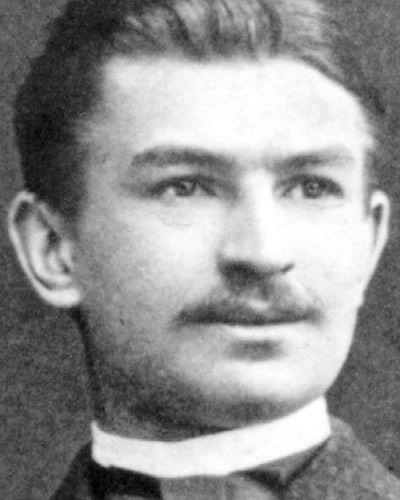
Begin of a story
The invention of the dynamo machine by Werner von Siemens in 1866 marks the beginning of the promising development of electrical engineering.
Paul Rauschert sen., a trained miller specialist from the Mark Brandenburg, recognizes the great opportunity and founds on 1 July 1898 in Hüttengrund / Thuringia a factory for the production of electroporcelain.
Rauschert picks up speed
Already in 1904, he operates three rotary kilns and, with 150 employees, manufactures insulators for overhead lines, but also beer bottle caps and furniture knobs.
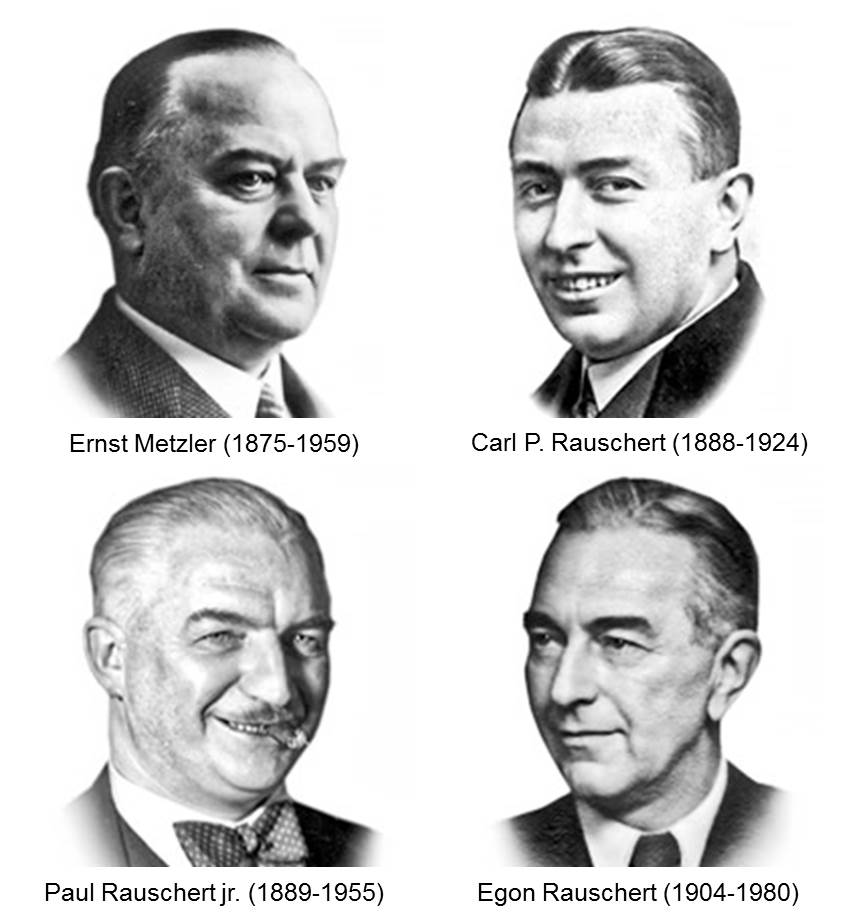
A family business in creation
In addition to the parent plant in Hüttengrund, the company founder takes over other companies and builds them into modern factories: 1909 Pressig, under the direction of his brother-in-law and associate Ernst Metzler, 1912 Steinwiesen, led by his son Paul and 1914 Steinbach am Wald, led by his son Carl.
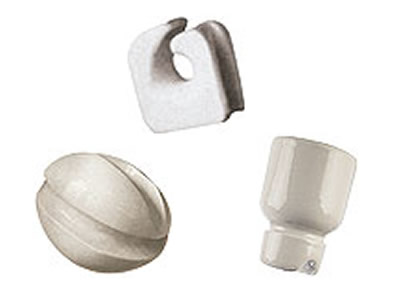
The product range develops
The product range has expanded to include lighting porcelain (smoke detectors for gas lamps), thread guides, accumulator porcelain, jars and a lot of small commodities. The hourly wage for the workers is 16 pfennigs.
A stroke of fate
The oldest son of the founder, Carl Rauschert, dies in a traffic accident. Paul Jr. must go to the parent plant, his younger brother Egon takes over Steinwiesen.

Rauschert expands
In 1927, the Rauschert Group acquires an important competitor, the porcelain factories Gebr. Pohl in Schmiedeberg, with branches in Erdmannsdorf and Haselbach. Paul Rauschert jun. takes over the reigns. Rauschert now has 2200 employees. Steatite and pyrolite (cordierite) complete the production program.
Years of crisis
In 1929, Paul Rauschert dies. the global economic crisis hits the company hard.
In 1932, Rauschert has only 60 employees after 2200 five years earlier.
In 1933 Rauschert loses its plants in Hüttengrund and Steinwiesen.
In 1945, after the end of the war, the Silesian plants in Schmiedeberg, Erdmannsdorf and Haselbach were also lost
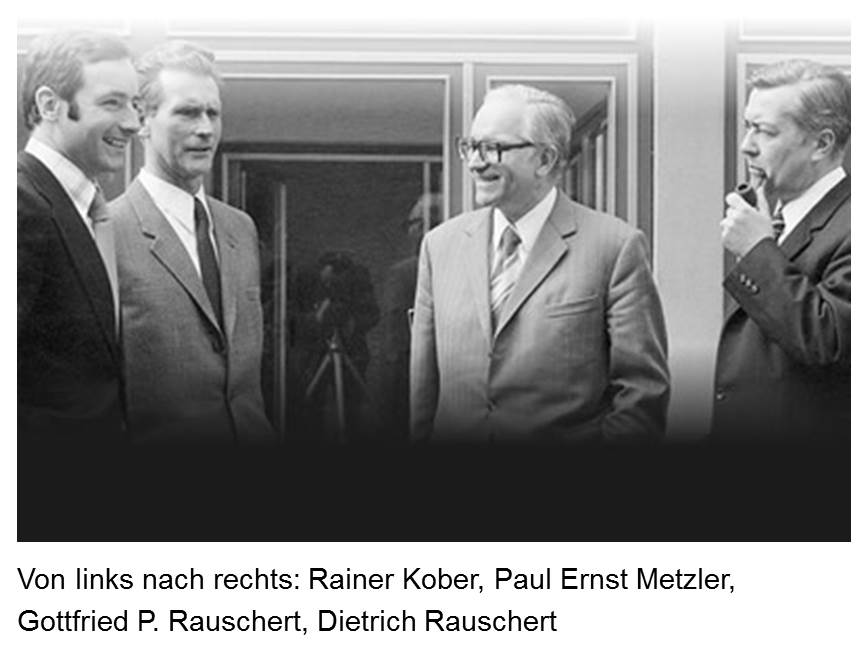
Rebuilding Rauschert
In 1940, Gottfried Paul Rauschert and 1944 Paul Ernst Metzler join the company and begin the rebuilding together with Paul and Egon Rauschert.
In 1950, the plant in Oberbettingen under the direction of Gottfried begins its work.
In 1965 Rauschert bought back the former factory in Steinwiesen where Dietrich Rauschert takes over the management.
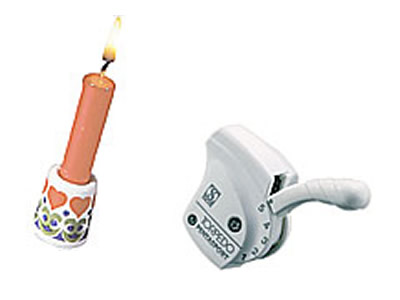
Funny-Design
In 1966, one third of the Rauschert turnover was lost with the bottle closure business. That’s why Rainer Kober, managing director from 1969, starts the gift program Funny Design in the particularly affected Steinwiesen plant. In 1967, the product range was expanded by plastic injection molding in Oberbettingen. Rauschert has a total of 600 employees
Rauschert becomes international
For its 75th anniversary Rauschert expands abroad for the first time. In Portugal, the first foreign branch is established in 1973.
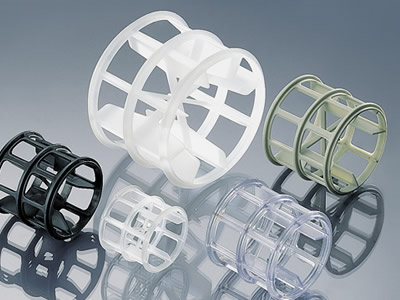
New business units
In 1976, the Process Technology business unit started with new products and its own plant engineering for chemicals and environmental protection.
In 1978, the production of aluminum oxide thread guides from Friedrichsfeld (Degussit) was completed.
Rauschert goes USA
In 1982, Rauschert continues to expand and founds the US plant in Madisonville / Tennessee, under the direction of Roland P. Rauschert.
A new generation
The next generation is in the starting blocks. Roland P. Rauschert (1990), Dr. Richard Metzler (1993) and Tom P. Rauschert (1997).
Phase of expansion
In 1994, Rauschert participates in a Czech press porcelain manufacturer. The company Elpor-Rauschert s.r.o., Bohosudov is born.
1996 Rauschert acquires the porcelain factory Kloster Veilsdorf in Thuringia, an important competitor before the war and after the opening of the border.
In addition, the Czech Rauschert s.r.o. in Horni Slavkov is formed.
In 1997, Rauschert takes over the former Silesian Rauschert plant Erdmannsdorf, now Myslakowice, Poland.
In 1998, a new steatite production facility is set up in Heinersdorf / Thuringia.
Rauschert now employs 1500 people at 10 locations.

Quality as a standard
In 1995, Rauschert has its own quality assurance system certified to ISO 9001.
Rauschert faces globalization
In 2002, the Rauschert Espana was built with the purchase of a ceramic factory in Barcelona. In the same year, the manufacturing of ceramic components (PTC ceramics) begins in Hermsdorf.
In 2003, the company expands its presence in Southern Europe with the founding of Rauschert Italia.
From 2003 to 2005, foundations take place in China (Shanghai), India (Pondicherry) and Mexico (Aguascalientes). In doing so, Rauschert faces the challenges of globalization.

Foundation of new business units
2006 saw the founding of Inopor. The joint venture establishes itself as an efficient supplier of ceramic filtration. In the same year the field of process engineering is sold.
In 2009, the new business units “Components and Assemblies”, “Engineering” and “Rauschert Solar” are founded.
